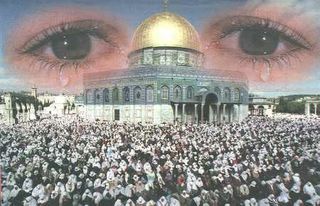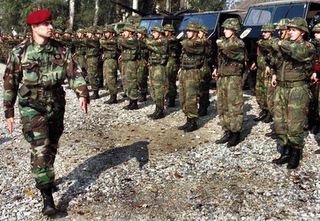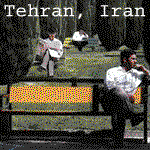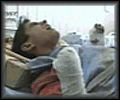Time To Weep

Al Aqsa Masjid (Mosque)

Palestine is an Islamic Country, with the beauty and richness that can only come by a kind and generous people. This same country before its occupation respected the three major religions, Islam Judaism and Christianity. It is our dream that with a free country that the three religions could once again visit the open city of Jerusalem. For now this city is considered a closed city through the Zionist regime.
Palestine Is Calling
Little Bird
My Ummah
Supplication
I look I see
Reverts Explaining the Beauty of Islam
How I became Muslim
Yusuf Ali- How I Became a Muslim
Those who spend (freely), whether in prosperity, or in adversity; who restrain anger, and pardon (all) men;- for Allah loves those who do good;
سورة آل عمران , Aal-e-Imran, Chapter 3:134
الَّذِينَ يُنفِقُونَ فِي السَّرَّاء وَالضَّرَّاء وَالْكَاظِمِينَ الْغَيْظَ وَالْعَافِينَ عَنِ النَّاسِ وَاللّهُ يُحِبُّ الْمُحْسِنِينَ
JERUSALEM/AL QUDS
Arabic: 'al-quds
Hebrew: yerushalayim
English: jerusalem
COMMON HISTORY
Capital of Israel with 650,000 inhabitants (2003 estimate). East Jerusalem, with about 300,000 is internationally recognized as Palestinian territory, but remains under Israeli rule, and will apparently stay this way in the foreseeable future.
Jerusalem lies about 55 km to the east of the coast of the Mediterranean Sea, and 25 km from the Dead Sea. It lies about 825-900 metres above sea level on the Judea-Samaria mountain range. The climate is subtropical, with warm and dry summers (24°C in August) and rainy winters (10°C in January). Some years Jerusalem even gets covered by snow. Annual rainfall is about 500 millimetres.
Jerusalem is divided into an old city, a new city and satellite towns scattered around it on all sides. On the eastern side, the towns have been built on land taken away from its rightful Palestinian owners, and filled with Jewish families, with the aim of making a return of East Jerusalem to Arab control as difficult as possible.
Jerusalem has had a Jewish majority since the late 19th century, and West Jerusalem has at no point in history been an Arab city. Jews represent the majority in some parts of the old city, but was prior to 1948 the largest group in the entire old city. Today, the Palestinians make up the majority in the old city.
Jerusalem is linked to Tel Aviv on the coast by highways and railways. Jerusalem International Airport lies in occupied Palestine, to the north.
ECONOMY
Jerusalem's economy is unusually limited for such a large city in the Middle East, with practically no industry. The lack of modern industry is to a large degree a political issue: the Israeli state has decided in favour of protecting the uniqueness of the city.
The main sources of income for Jerusalem are state institutions and government activities, building activities and tourism. The latter has declined since 2000, with numerous attacks from Palestinians in protest to the internationally condemned occupation of Palestine.
Other forms of service activities are banking, finance and insurance.
Among the main sorts of light industry in the city are diamond cutting and polishing, as well as printing and publishing. In recent years, new technologies have become increasingly important, often in cooperation with Jewish companies on the West Bank.
RELIGIOUS IMPORTANCE
Being the most holy city in Christianity and Judaism, and the 3rd holiest in Islam, Jerusalem is clearly the most important religious city in the world. The importance is exacerbated with some of the sanctuaries occupying virtually the same areas, and that the status of Jerusalem is one of the most tense issues in the Jewish/Arab conflict.
It was with the construction of the Temple of Jerusalem in the 10th century BCE that Jerusalem became the central city of Judaism.
Christianity, which is a continuation of Judaism, adheres to Jerusalem both because of its Jewish roots, and also because they believe that this is the main scene of the acts of Jesus and the ground where he was crucified.
In Islam, Jerusalem's importance is due to a tradition saying that Muhammad went on a celestial journey from the spot where the ruins of the Jewish temples was and where the Dome of the Rock later was erected. But Islam also adheres to Jerusalem because it claims to be the true version of Judaism and Christianity, hence both the Jewish temple and the life of Jesus is theoretically a part of the history of the religion of Islam. But the latter reason is strained in modern times, when Muslim leaders have focused on emphasizing the distance between Islam on one side and Judaism and Christianity on the other.
By itself, Jerusalem has played a surprisingly small role in the theological development of all the three religions. For Islam, Jerusalem is virtually unimportant, as most of the theological institutions of the formative first centuries were in Mesopotamia, Iran, Egypt and Arabia. For Judaism, most of the theological work has been in the many diasporas, and Europe has been a far more important arena for the development of the religion than Jerusalem. The people considered by Christianity to be the earliest Christians (see Jesus-Judaism) had already left Jerusalem or had never lived there during the period where Christianity came to be defined as an independent religion from Judaism. But Jerusalem has always been important as a symbol in all these religions.
Coexistence between religious groups have predominantly been peaceful, but at times of political instability tensions between the groups have resulted in riots and violence. Today, the old city is divided into 4 zones, one Muslim (the largest), one Jewish and two Christian.
All holy places and religious communities are administered through the Ministry of Religious Affairs. There are special desks for every major group. The Chief Rabbinate of Israel has its headquarters in the synagogue at Hekhal Shelomo. Muslims administers their issues through the Council of Waqf and Muslim Affairs (Sunni orientation) created in 1967.
The Christians are divided into a number of different orientations, and Jerusalem is the seat of 3 resident patriarchs of Eastern Orthodox churches, and there are many archbishops and bishops as well as embassies of most Christian sects. The main denominations share control over the Church of the Holy Sepulchre.
CULTURE
Jerusalem is administered as a cultural heritage. New constructions in the modern city are strongly controlled. Even if style is modern, only a limited range of stone types and colours are allowed, and the height of buildings is strictly controlled.
Culture in Jerusalem is predominantly oriented towards religion. Virtually all major sites and important buildings are of a religious character. The closest Jerusalem gets to an exception is the parliament building Knesset, an example of modern architecture in the early days of the state of Israel's history.
Ever since the arrival, the use of Jerusalem stone for all building facades has been obligatory. This applies to all modern structures.
For Christians the Church of the Holy Sepulchre is the most important of several important sites. It is believe to have been erected over the tomb of Jesus. The church was damaged by zealous Muslims in the 11th century, and today's church is the one rebuilt following the Christian conquest of Jerusalem in 1099.
Other central sites of Christians is the Via Dolorosa, where they believe that Jesus carried to cross on his way to his crucifixion. Where the actual route was, is impossible to determine with certainty.
A competitor to the Holy Sepulchre is the Garden Tomb, just to the north of the Old City, which in the late 19th century was claimed to be the place where Jesus was buried.
For Jews, there is really just one dominant site, the Western Wall. (see picture) It is all that is left after the Roman's destruction of the second Temple of Jerusalem. The main area of the temple is today occupied by the Dome of the Rock and the al-Aqsa mosque, both central sanctuaries to Islam.
Other Jewish sites are ruins of the Hurva synagogue, a rare reminiscence of Jewish immigration to Palestine in the early 18th century. Nearby fragments of the city wall of Hezekiah built in 701 BCE are found. Among the several doubtful sites of Jerusalem is the Tomb of King David, declared to lie on the Mount Zion.
While the Muslims only have one important sites in Jerusalem, it is nevertheless the most significant: The Dome of the Rock, which is not a mosque but a shrine. Next to it lies the al-Aqsa mosque. While it is built over the ground of the ancient Jewish temple, there was nothing but rubble here when the building process started in the 7th century.
Two buildings were erected between 688 and 691, but the second, a mosque, have not survived. It was the al-Aqsa mosque which replaced it. The famous golden dome of the Rock of the Dome is rather recent, but it corresponds with the original design. Until the 1960's it was covered by a bronze-aluminum alloy. Inside the Dome of the Rock, there is actually a rock of great religious importance. According to Jewish tradition this is the place where Abraham was about to sacrifice his son. It is quite possible that the rock became the innermost chamber of the first Temple of Jerusalem. The Muslims emphasize less the sacrifice of Abraham (mentioned in the Koran, 37) but there is a point on the rock where they claim that the prophet has left his footmark before ascending to heaven.
HISTORY
6th millennia BCE: The site of Jerusalem is inhabited by local peoples of whom we know practically nothing.
5th millennia: A people now known as Canaanites conquer the site.
15th century: The site comes under Egyptian rule, after being conquered by the army of king Tuthmosis 3.
Around 1250: Hebrews start conquering Canaan, but are unable to take control of Zion or Shalem, as it was known, thanks to its strong fortifications.
993: The Hebrew king David conquers Zion or Shalem. He makes it his capital, and the Ark of the Covenant is brought from Qiryat Ye'crim to the west, to Jerusalem.
10th century: King Solomon has a wall built around the city, and has many other important buildings erected in the city. His main project was the Temple of Jerusalem.
922: Jerusalem is sacked by the army of the Egyptian pharaoh Sheshonk 1.
9th century: With the disintegration of Israel, Jerusalem loses much of its wealth and its expansion comes to a halt.
850: Jerusalem is sacked by Philistines and Arabians.
8th century: Jerusalem is becoming richer again, and regains its regional importance.
786: Joash of Israel sacks Jerusalem.
701: Jerusalem is subdued by Assyria, which allows limited independence in compensation of a heavy tribute.
612: Assyria yields its supremacy over Jerusalem to Babylonia.
604: Jerusalem is pillaged by the Babylonians, and the king Jehoiakim and his court are captured and transferred to Babylon.
587/6: The Temple of Jerusalem is destroyed by Nebuchadnezzar.
582: Many of the inhabitants of Jerusalem are deported to Babylonia.
538: The Persians defeat Babylonia, and the Jews are allowed to return to Judea.
515: Despite Samarian opposition, the temple is reconstructed.
Middle 5th century: The fortifications of Jerusalem are restored.
333: Jerusalem effectively falls under the control of Alexander the Great, even if it is not conquered.
320's: Jerusalem comes under control of Egypt ruled by one of Alexander's generals Ptolemy 1 Soter.
198: Jerusalem is transferred to Seleucus 1 Nicator, ruling from Antioch.
167: The strong Hellenistic influence on Jewish rituals and the deliberate desecration of the Temple by the Seleucid ruler sparks a rebellion among conservative Jews, led at first by Mattathias son of Hasmoneus, later by his son Judas the Maccabee. The group, know as Maccabees, manages in driving the Selucids out of Jerusalem and Judea.
2nd century: Rulers of the Maccabee family take control over Jerusalem, bringing the city unprecedented wealth, and affirm its position as the holy city of Judaism and the goal of Jewish pilgrimage.
63: Jerusalem is conquered by the Roman general Pompey, but in most fields this has minimal impact on Jerusalem's power, wealth and culture. The city is named Hierosolyma.
40: Herod becomes king of the Roman province of Judea. He was of a Jew of Edomite origin and managed to get control over the conflicts between Jewish groups. He manages to bring great wealth to Jerusalem, and has the Temple rebuilt on a grand scale. He also constructed the Xystus, a grand open place; a palace; a hippodrome; a theatre and a large reservoir.
4: Herod dies, and is succeeded by his son Archelaus.
6 CE: The institution of king is replaced with Roman procurators.
66: The Jews rebel against the Romans.
70: Roman Emperor Vespasian takes control of Jerusalem following a Jewish rebellion, and razes the city. The temple was almost totally destroyed.
130: Jerusalem, now a city largely deserted and in ruins is stated to be reconstructed as a new city called Aelia Capitolina by the orders of Emperor Hadrian.
132: A new Jewish rebellion is staged by Simon Bar Kokhba, that would last or 4 years. Hadrian responded by recreating Jerusalem as a non-Jewish city under the name of Aelia Capitolina. No Jews were admitted into it.
336: The Church of the Holy Sepulchre is built over the ground where it was claimed that Jesus was buried. The church was constructed to include the place where Jesus was believed to have been crucified.
Middle 4th century: Large immigration of Christians to Jerusalem, and Christian pilgrimage becomes popular. The relatively small city of Jerusalem was soon turned into a Christian city.
6th century: The Armenian church establishes its patriarchate in Jerusalem.
614: Conquered by the Persian king Khosrau 2. Many of Jerusalem's inhabitants are massacred, and the churches destroyed.
628: Reconquered by the Byzantines.
637: Jerusalem is conquered by the Arab Muslims. Little is done to change the structures of the city, and the Christian majority is left in peace.
688: A grand construction is erected by Muslim rulers over the ruins of the Temple of Jerusalem, and the place where the Muslims claimed that Muhammad had ascended to heaven. The construction, known as Dome of the Rock was defined as a shrine, not as a mosque, and is even today the 3rd most holy spot for Muslims.
10th century: The al-Aqsa mosque is built next to the Dome of the Rock.
969: Jerusalem comes under control of the Fatimids of Cairo.
1010: Fatimid caliph al-Hakim orders the destruction of the Christian shrines of Jerusalem, including the Church of the Holy Sepulchre.
11th century: New city walls are erected, which exclude the City of David and Mt. Zion.
1071: Seljuq Turks conquer Jerusalem, and based upon their extremist and deviant Muslim views, they treat the remaining Christians population and the Christian pilgrims badly. Some were killed and many not admitted to the holy places of Jerusalem.
1098: Jerusalem is recaptured by the Egyptians.
1099: European crusaders arrive in Palestine, and quickly conquers Jerusalem. The grandest bloodbath in the city's history is staged, and an estimate of 70,000 men, women and children are slaughtered. The Latin Kingdom of Jerusalem is founded.
— The Roman Catholic Church is established for the Middle East.
1149: The new Church of the Holy Sepulchre is consecrated.
1187: Jerusalem is reconquered by the Muslim under the leadership of Saladin. The Kingdom of Jerusalem continues to exist as a small state limited to the coast of Palestine.
1229: The crusaders gets back the control over Jerusalem following the signing of a treaty by German emperor Frederick 2 and the Egyptian sultan al-Kamil.
1244 July 11: Jerusalem is besieged and conquered by the Khorezmians.
1247: Conquered by Egyptian rulers (from 1250 Mamluks), and many centuries of decline are to follow. The only Christians remaining in town were Greek Orthodox and some eastern churches. Jews were however allowed to return.
1517: Jerusalem passes over to the Ottoman Empire.
1831: Jerusalem is conquered by Egyptian troops.
1840: The Ottomans reconquers Jerusalem.
1847: The Latin Patriarchate (Roman Catholic Church) is reestablished in Jerusalem.
1860's: New quarters of Jerusalem are being constructed outside the walled city, mainly by immigrating Jews.
1887: A municipality is established for Jerusalem.
1917: British troops take control of Jerusalem, following the defeat of the Ottomans in the World War 1.
1918: Hebrew University of Jerusalem is founded and located to Mount Scopus, northeast of the old city.
1922: Jerusalem becomes part of the British Mandate in Palestine.
1947: The UN defines Jerusalem as an international enclave following the partition of Palestine into one Jewish and one Palestinian part.
1948: The Jewish army takes control of western Jerusalem, as well as a corridor from the coastal regions. Jordan occupies the eastern parts with all the holy places.
1950: West Jerusalem is declared capital of Israel. East Jerusalem becomes part of Jordan, when the West Bank is annexed.
1967 June: Israel occupies all of Jerusalem as well as all land on the western side of Jordan river.
1980: The undivided Jerusalem is declared the eternal capital of Israel. This is received with protests from an entire international community, which with only 2 exceptions move embassies to Tel Aviv.
1981: The Old City of Jerusalem is designated a UNESCO World Heritage site.
1993 September: With the Oslo Agreement the future political status of Jerusalem is defined as a debatable issue.
1996: Palestinians protest against the construction of a pedestrian tunnel from the Via Dolorosa to the Western Wall. They feared that it would undermine the Muslim sanctuaries Dome of the Rock and the al-Aqsa mosque. More than 70 people die in the riots.
2000 October: Ariel Sharon visits the area of Muslim sanctuaries, a deliberate provocation as it really was intended as a visit to the lost Jewish Temple of Jerusalem, which hardline Jews wanted to recreate on the expense of the Muslim sanctuaries. Violence erupts resulting a wave of violent attacks by Palestinians against Jews in Israel and Palestine.





















